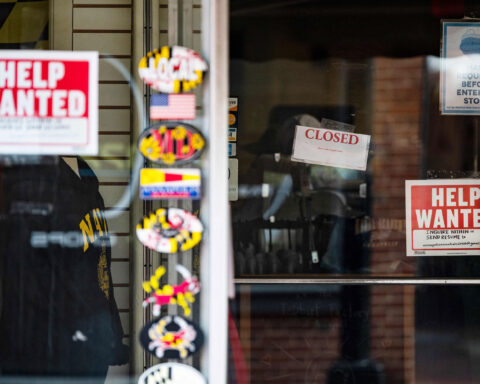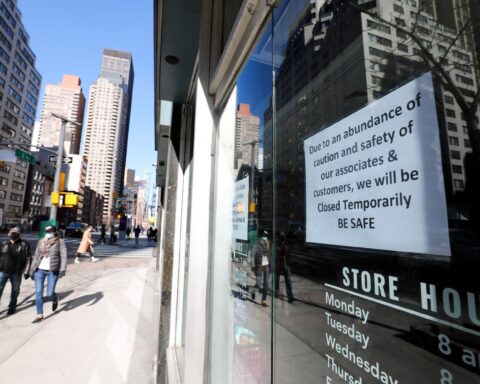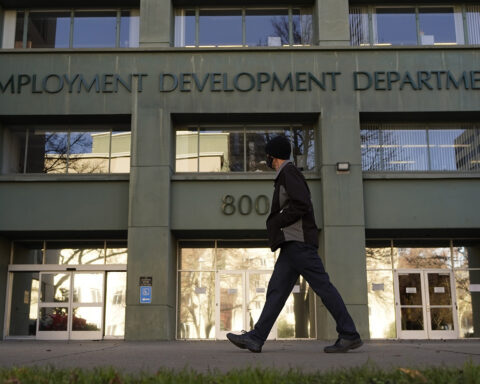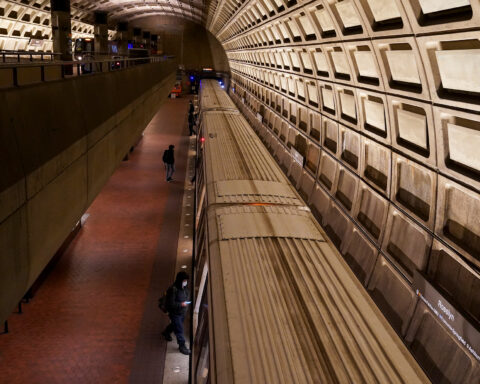America’s job market is in a weird spot: it’s still millions of jobs short of where it was before the pandemic, but businesses complain they can’t find staff. Opponents of enhanced unemployment benefits during Covid say the government aid is so cushy, the jobless don’t want to return to work.
On the surface, that argument has some merit.
The jobless benefits Congress bolstered at the start of the pandemic have been extended until September. Now, though, people are getting vaccinated and employers want their laid-off employees to come back. That should be a recipe for success. Yet the pace of job growth came in at a disappointing 266,000 in April, far less than analysts expected.
For critics of the pandemic-era jobless aid, the connection here is obvious: Benefits are making life too comfortable for the unemployed to go out and find a job.
But it’s not that simple.
The money to fund these benefits has already been allocated by Congress and is out of the door. What’s more important now is that Americans — jobless or not — spend the cash in their wallets to help the nation along on its road to recovery. The US economy runs on consumer spending and every dollar in every wallets counts.
While pundits are arguing, Americans are on the same page. Consumer confidence is soaring, retail sales jumped in March and gross domestic product — the broadest measure of economic activity — is on pace for a super-strong 11% annual growth rate this quarter, according to the Atlanta Fed.
In this strange pandemic environment, we shouldn’t be screaming in agony about any particular jobs report. We should, however, be jumping for joy when GDP is growing strong, because that’s the tide that lifts all boats. And in this case, the extra unemployment insurance is doing its job.
Reasons to stay home
The Biden administration-backed American Rescue Plan extended the pandemic jobless aid that provides a weekly additional $300 until September. The stimulus plan also extended the Pandemic Unemployment Assistance program for the self-employed, and the Pandemic Emergency Unemployment Compensation program that funds benefits after individuals have exhausted their state benefits.mi
Several states announced that they would end the pandemic programs before the official expiry in September, including Montana, South Carolina, Arkansas, Alabama, Mississippi and North Dakota.
All of these states except Mississippi have a lower unemployment rate than the national average as of March, according to government data.
President Joe Biden defended the effectiveness of the pandemic programs in the past days, saying “the law is clear: if you are receiving unemployment benefits and you’re offered a suitable job, you can’t refuse that job and just keep getting the unemployment benefits.”
Some people are, however, better off collecting those extra unemployment insurance than working. Research from Bank of America supports the argument that too much unemployment aid keeps people from looking for work — but only if the workers in question previously made less than $32,000 per year, which is less than half the national median income.
“Our estimates suggest that those who previously made less than $32,000 would be better off in the near term to collect UI benefits than work,” wrote BofA economists Michelle Meyer, Joseph Song and Anna Zhou in late April.
“The more generous unemployment insurance would benefit workers in low-wage occupations such as food preparation and services and personal care services-all sectors where employers have flagged difficulties in hiring and retaining workers,” they said.
But there’s a problem with that argument. This disincentive should evaporate in September, when the government’s aid boost expires.
And many people really need those benefits because they don’t have the choice about whether to return to work.
For workers with care obligations, be it for children or older relatives, leaving the house for hours might just not be an option as long as the care infrastructure isn’t fully up and running again. Last September, when schools started again, hundreds of thousands of women dropped out of the labor force due to child care obligations, for example. Benefits weren’t the reason.
Making sense of the jobs report
Another problem with blaming UI benefits for the weak jobs report: It’s just one data point, not a trend. And diving deeper into the numbers doesn’t support the argument that low-income people are waiting on the sidelines.
The government’s tally of jobs added to the economy underperformed economists expectations by more than 700,000 jobs last month. But the leisure and hospitality industry added 331,000 positions, which brings its pandemic-era job growth to 5.4 million. And yet, employment in the industry, which was hit the hardest at the start of the pandemic, is still down 2.8 million compared with February 2020.
“You had big job gains in leisure and hospitality, which is exactly the sector you’d expect people to be most inclined to stay home because of either virus risks or unemployment benefits,” Princeton economist and Nobel laureate Paul Krugman told CNN’s Julia Chatterley last week.
More people also re-entered the workforce looking for new jobs, which is a good sign for the recovery. That’s why the unemployment rate inched up 0.1 percentage points to 6.1% last month: the more workers are actively looking for employment, the higher the jobless rate.
Meanwhile, factories and manufacturers have a hard time finding qualified personnel. The reason, they say, is that workers are worried that their jobs would be outsourced abroad or replaced by machines. So that’s what’s keeping factory workers at home.
Even so, last month’s disappointing report definitely dents the idea that the economy is booming, said Krugman, but that doesn’t mean it’s time to panic. “I think we wait and see to figure out what is really going on here.”
A changed labor market
One thing is for sure. The pandemic will leave a lasting mark on America’s labor market.
The nation is still down more than 8 million jobs and some of them might never come back. The pizza shop that closed isn’t rehiring. The small brick-and-mortar retail store that shuttered won’t ever need more staffers, either.
For people who lost those kinds of jobs, the enhanced unemployment benefits are a lifeline — and a way to keep participating in the recovery. All spending, no matter how it was funded is helping it chug along. Eventually, the economy will be strong enough to run without help again and economists will turn their attention to other issues, like the nation’s deficit. But for now, the help is still needed.
The real problem is that the pandemic has exacerbated trends that already hurt local economies before Covid: You’re shopping mostly online at Amazon, Walmart and the like. Local stores have no way to keep up with the convenience and prices of the big companies.
The pandemic economy is new and keeps evolving. That’s part of the reason economists got their forecasts so spectacularly wrong last month. It wasn’t the first time that happened, either.
“The short technical summary is ‘what the hell,'” Krugman said of the report. “That doesn’t match anything that we’re seeing in other data.”
At this point, it’s not even clear how much it really matters. The latest data disappointment might mean nothing in the long-run. After all, one data point doesn’t make a trend. The May jobs report could show the massive uptick in job growth that economists had predicted last month. Plus, the disheartening April figures could be revised as well. It’s going to take some time for the economy to find its new shape.





